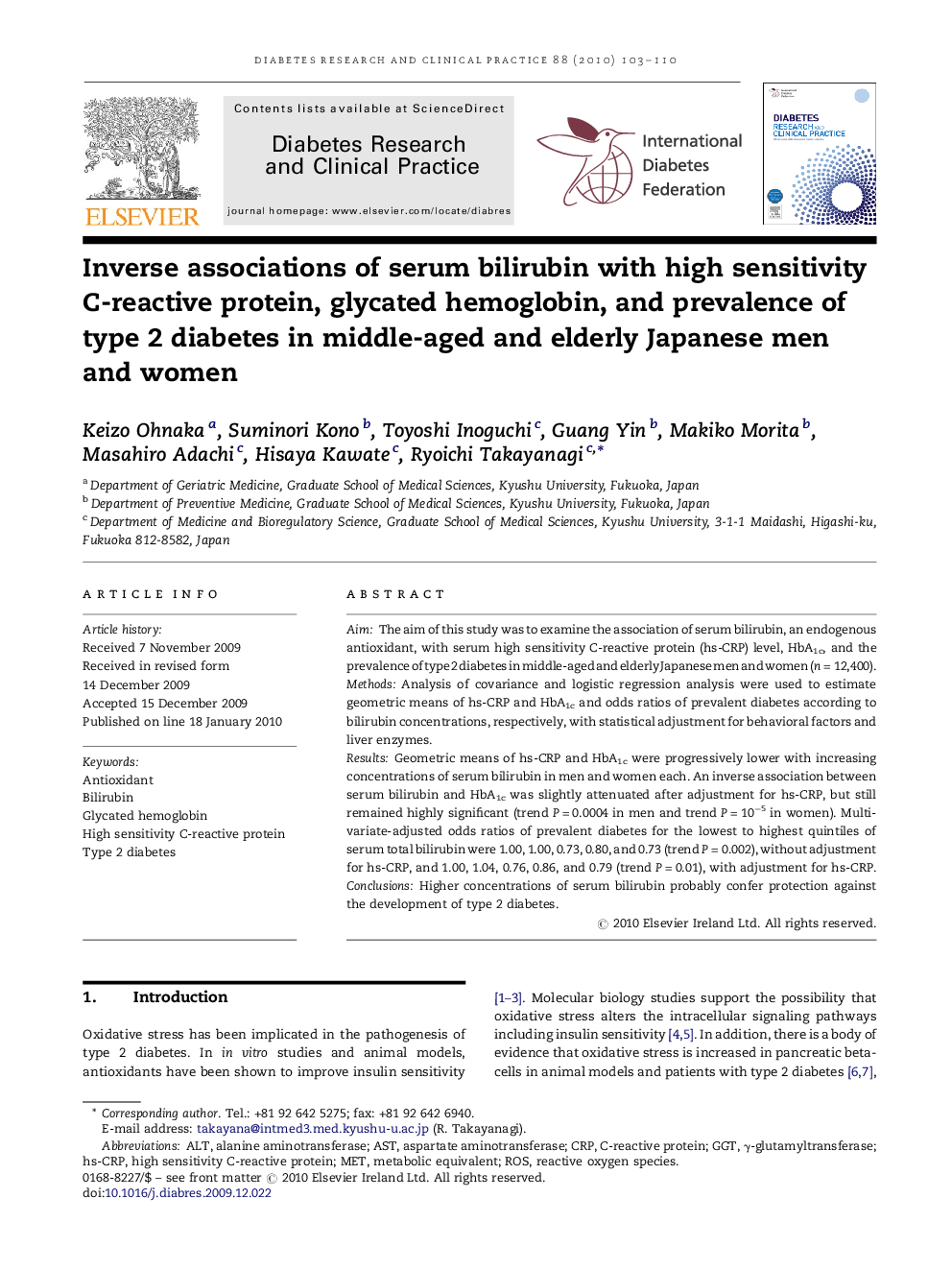| Article ID | Journal | Published Year | Pages | File Type |
|---|---|---|---|---|
| 2797623 | Diabetes Research and Clinical Practice | 2010 | 8 Pages |
AimThe aim of this study was to examine the association of serum bilirubin, an endogenous antioxidant, with serum high sensitivity C-reactive protein (hs-CRP) level, HbA1c, and the prevalence of type 2 diabetes in middle-aged and elderly Japanese men and women (n = 12,400).MethodsAnalysis of covariance and logistic regression analysis were used to estimate geometric means of hs-CRP and HbA1c and odds ratios of prevalent diabetes according to bilirubin concentrations, respectively, with statistical adjustment for behavioral factors and liver enzymes.ResultsGeometric means of hs-CRP and HbA1c were progressively lower with increasing concentrations of serum bilirubin in men and women each. An inverse association between serum bilirubin and HbA1c was slightly attenuated after adjustment for hs-CRP, but still remained highly significant (trend P = 0.0004 in men and trend P = 10−5 in women). Multivariate-adjusted odds ratios of prevalent diabetes for the lowest to highest quintiles of serum total bilirubin were 1.00, 1.00, 0.73, 0.80, and 0.73 (trend P = 0.002), without adjustment for hs-CRP, and 1.00, 1.04, 0.76, 0.86, and 0.79 (trend P = 0.01), with adjustment for hs-CRP.ConclusionsHigher concentrations of serum bilirubin probably confer protection against the development of type 2 diabetes.
